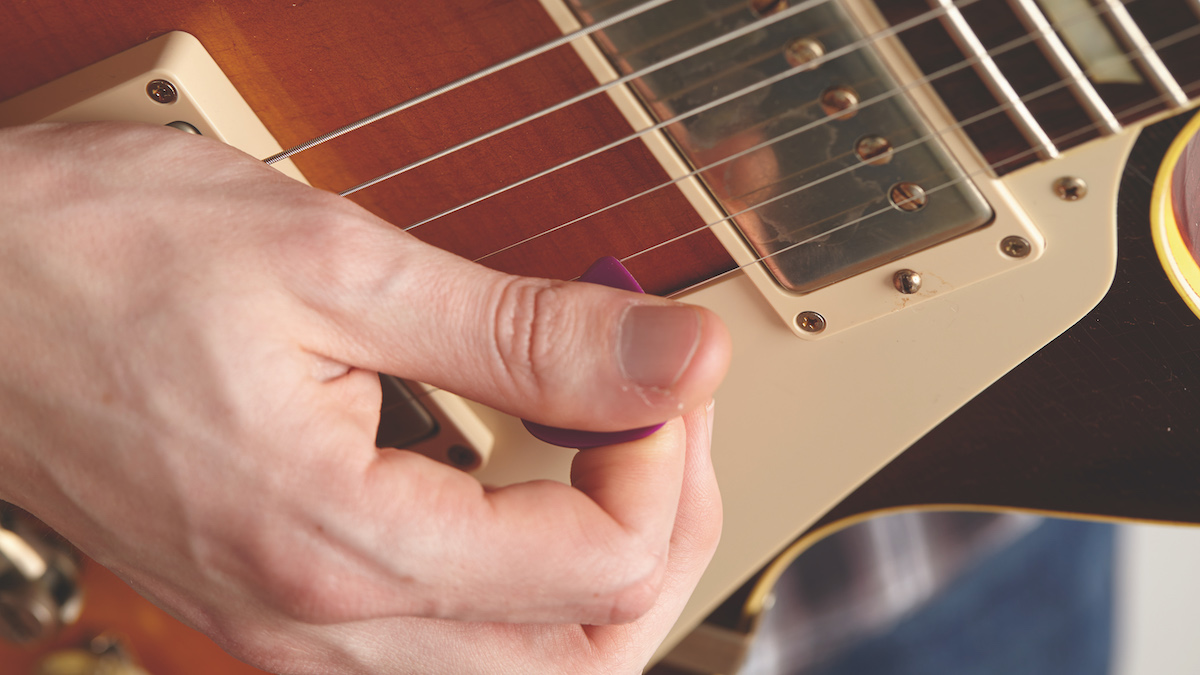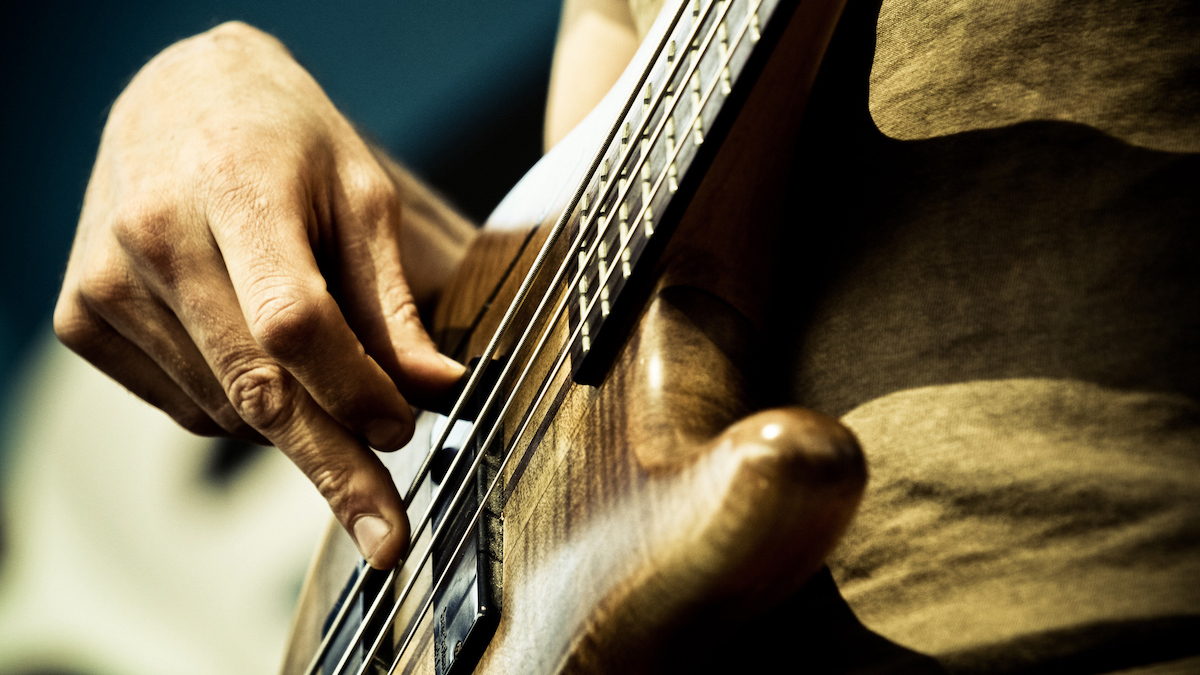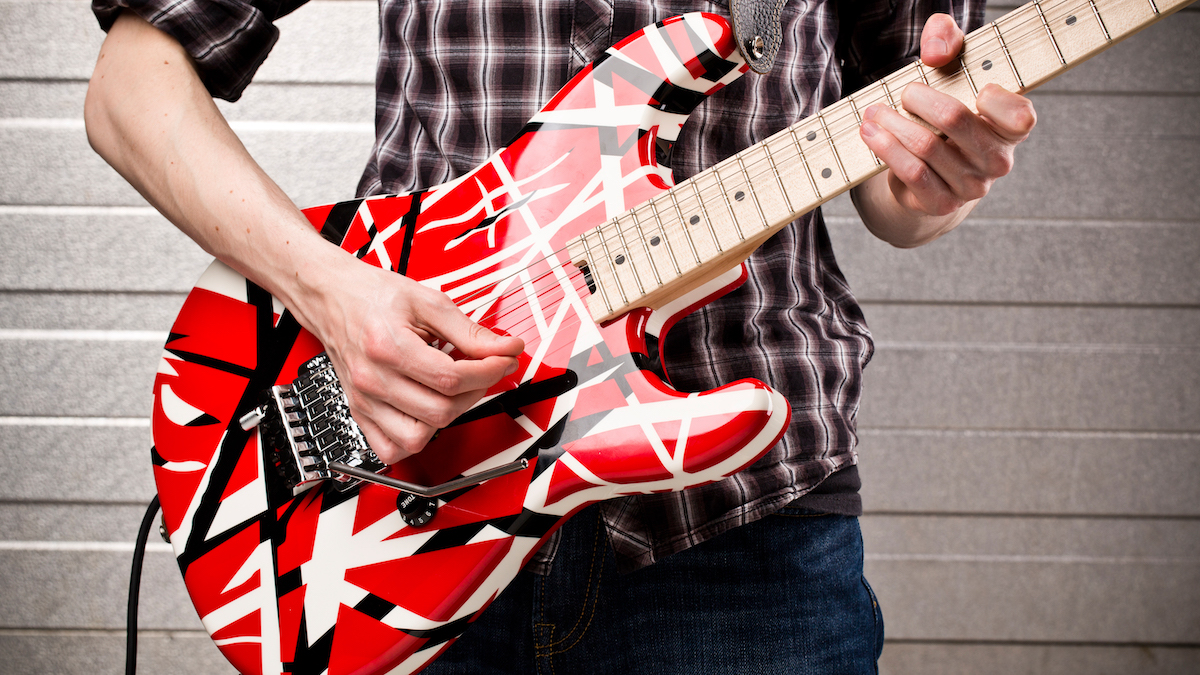
When playing guitar or bass, one of the choices we can make at any stage is whether to play with a guitar pick or with our fingers. Both ways require a different approach with the picking hand, and can lead to two very different playing styles. So what’s better – playing with a pick, or fingers?
As you might expect, there isn’t really a right answer to the pick vs fingers debate. Or at least, the simple answer is: whichever one you prefer. One or the other might be more comfortable for certain players, plus both techniques will give you different tones that can work particularly well for certain styles of music. In some cases, you might want to get to grips with both techniques.
Here, we will look at some of the differences between playing the guitar and/or bass with a pick and with fingers. We’ll go through some of the tonal differences, as well as more practical ones, and we’ll check out some famous players on both sides along the way.
Arguments for playing with a pick

For most popular guitar styles – rock, pop, funk, metal etc – using a pick is probably seen as the norm. If you look at a beginner guitar starter pack, it’s almost certainly going to come with at least a few picks included. Many beginners find that it’s easier to use one when just starting out – there’s enough going on with the fretting hand to worry about what fingers need to be plucking which strings.
It’s interesting though that when most people who have never played before pick up a guitar for the first time, they will pluck the strings with their fingers or thumb, even when there’s a pick next to them; that’s what feels natural at first. Holding a piece of plastic between finger and thumb doesn’t seem like the natural thing to do, but once they have gotten to grips with it, it does then become easier to strike the strings with more precision.
Precision is a lot of the reason picks are so popular for guitarists
Precision is a lot of the reason picks are so popular for guitarists. Players can really focus in on the strings they’re playing with a pick, and use alternate picking (that is, picking down then up) to play at speed. A pick is also essential for techniques such as sweep picking, as you glide it across the strings.
Generally speaking, using a pick will give you a brighter sound than when you use your fingers. Picks are made from all sorts of different materials these days, that allow you to choose what sort of tone you get, but generally picks are brighter. You get a faster, sharper, more defined and more consistent attack to the notes too. Of course, you can vary the dynamics with your picking hand, but when using a pick to play those same notes, you’re likely to get a more even sound, particularly when playing chords. You’re hitting all the notes of the chord in one strum, whereas with your fingers, if you’re plucking them individually, there’s more chance that the attack could be uneven.
Much of the above also applies to bass. Some bassists like using a pick for its brighter tone, faster and snappier attack and more consistent volume. They say that they feel like they’ve got more control and precision. If you’re playing genres like hard rock or heavy metal, a thick plectrum could well mean that you can get a bigger sound too.
There are a lot of famous players that are known for using a pick, including Jimi Hendrix, Nita Strauss, Paul McCartney, Slash, Lemmy, Carol Kaye, John Petrucci, Kirk Hammett, H.E.R., Mike Kerr, Orianthi, Jim Root, Sophie Lloyd and absolutely loads more.
Arguments for playing with fingers

Playing guitar and bass with fingers instead of a pick will give a warmer, softer, mellower and more rounded sound, with less of a pronounced attack. Some say that it’s a more delicate and intimate sound. It can work well on both electric and acoustic, as well as bass guitar. A lot of folk guitarists use their fingers, as do some jazz players. Using fingers is pretty much essential for playing classical and flamenco style guitar as well.
When playing fingerstyle, there is a direct connection between the player and the strings of the instrument. This makes many fingerstyle players feel like they’ve got a greater control of dynamics. You’re more easily able to control how much power or force you move the strings with, which can help you play with more expression.
Fingerpicking on guitar can be difficult, but it can also enable you to play pieces that would otherwise be impossible. Your thumb can be picking away at a bass line while your fingers are playing chords or a melody. When done well, it can even sound like there are multiple guitars playing at once.
The warmer, more rounded sound that fingers produce works well for bass as it can help hold the entire low end of a track down
A lot of bassists choose to use their fingers instead of a pick. For a lot of music, a bright sound or fast attack isn’t needed on the bass – that’s what the guitars are there for. The warmer, more rounded sound that fingers produce works well for bass as it can help hold the entire low end of a track down, without treading on the higher frequencies of the other instruments and vocals.
Using fingers on bass also allows you to execute different styles more easily. With your fingers, you can pluck the strings, or maybe use your thumb to strike them. You can also slap and pop – the sound of disco and funk music would not be the same if all the bassists were using picks!
With practice, some bassists find it easier to play fast with fingers too. A lot will use two, or even three fingers for picking, but you’ve essentially got four at your disposal, whereas you can only hold one pick at a time. Steve Harris is a great example of being able to play fast with fingers, plus that’s what gives so much of Iron Maiden’s stuff that famous ‘gallop’.
Some bass players might swap technique between songs, or they might even swap mid-song. Personally when I’m playing bass live, I like to slightly unscrew the scratchplate of my bass so I can hold a pick there - this allows me to very quickly switch techniques. For example, I might use fingers for a verse – softer, mellow, dynamic and thickens up the whole sound. Then I’ll grab the pick for the chorus or for riffs etc and this can help accentuate certain rhythms and lend more attack.
There are a lot of bassists that are known for mostly using fingers, such as James Jamerson, Sting, Steve Harris, Blu DeTiger, Flea, Geddy Lee, Cal Wilkenfeld, Tim Commerford, Marcus Miller and more. Some guitarists that you’ll often see using a fingerstyle technique include Jared James Nichols, Yvette Young, Jeff Beck, Joe Pass, Mark Knopfler, Holly Henderson etc.
What about a hybrid approach?

Now, if you’ve read the above and like the sound of both approaches, then fear not – there is a way of getting the brightness and fast attack from pick as well as the dynamics and ability to pick out individual strings that you get with fingerstyle. Enter: hybrid picking.
Hybrid picking is where you use a pick, usually between your index finger and thumb, and pick or pluck with your other free fingers. On guitar, it’s often used in country and blues – though Eddie Van Halen and other rock players would use it in quieter, more intimate parts of a song. This can then help it contrast with the louder, heavier parts played with a pick.
Using hybrid picking on bass, you can get the precision with a pick, but add in an occasional pop if you want to add another different tonal texture in there.
Conclusion
As you might expect, there is no real winner in the pick vs fingers debate. With bass and guitar, they both have their place. A pick grants you a faster, snappier attack and a brighter tone alongside accuracy, precision and control. Fingers allow for greater dynamics, the ability to play different lines at once, as well as softer, mellower and warmer sound.
It all boils down to the sound you want to make, and what you feel comfortable playing. A lot of players will use both pick and fingers. Getting to know both techniques; the sounds they produce, how it all feels under the fingers etc can be really useful.







